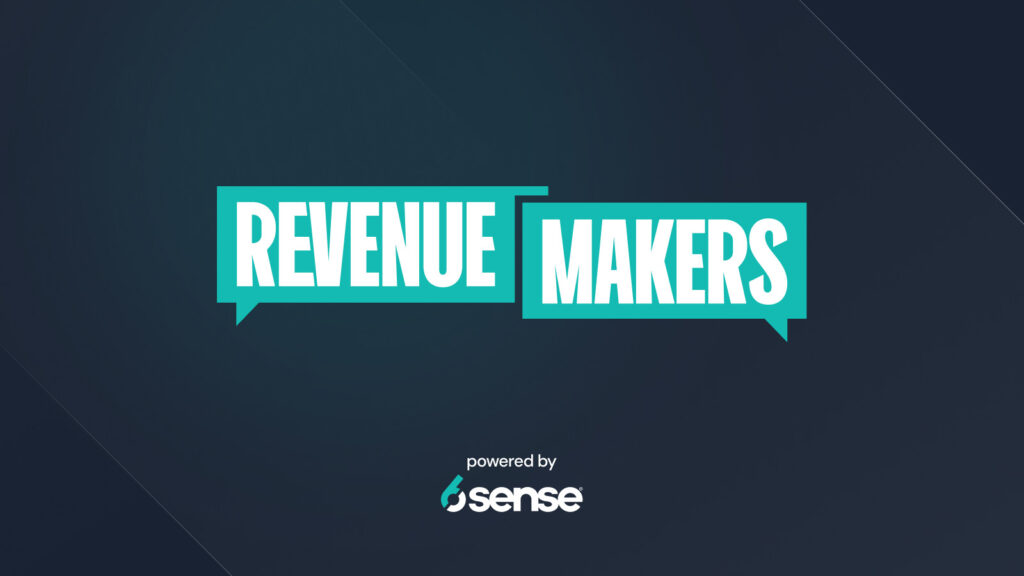Imagine a bustling metropolis — perhaps one populated by a certain superhero with a “nice S” — where businesses navigate the intricate web of market dynamics, striving to remain relevant… and to stay ahead of their competitors.
In this world of cutthroat capitalism, B2B sales stands on the precipice of uncertainty. Challenges lurk around every corner: Larger buying teams, longer sales cycles, and lack of actionable data are just a few.
But hark! What’s that above? A bird? A plane? It’s a beacon of hope — a hero in the form of predictive sales forecasting! In swoops this caped game-changing do-gooder, armed with the extraordinary powers of advanced analytics and data modeling.
Who is this superpowered sales dynamo? And what powers their ability to accurately predict the future? (Hint: It’s 6sense.)
Let’s explore how using 6sense’s predictive analytics technologies helps you conquer uncertainty and ambiguity in your own sales Metropolis.
What is Predictive Sales Forecasting?
Predictive sales forecasting is a powerful technique that uses advanced analytics and data modeling to predict future sales outcomes with a high degree of accuracy. It involves analyzing historical sales data, customer behavior, and other relevant factors to generate insights and make informed predictions about future sales performance.
In the context of sales, predictive analytics plays a crucial role in helping businesses anticipate customer demand and make strategic decisions. Using predictive sales forecasting, organizations can gain a competitive edge by:
- Accurately predicting sales volumes
- Identifying potential risks and opportunities
- Aligning their sales strategies
This approach enables sales teams to move beyond traditional methods of forecasting, which often rely on subjective judgment. Instead, predictive sales forecasting uses sophisticated algorithms and machine learning techniques to analyze vast amounts of data and uncover patterns and correlations that may not be clear to human analysts.
Benefits of Predictive Analytics Sales Forecasting
Predictive analytics sales forecasting offers numerous advantages that impact performance and overall success:
- Enhanced Accuracy: Using advanced algorithms and machine learning techniques to analyze data, predictive analytics enables sales teams to generate highly accurate forecasts.
- Real-Time Forecasts: Predictive analytics provide real-time insights, allowing businesses to make agile decisions, adapting their sales strategies promptly to seize opportunities as they arise.
- Improved Performance: By predicting future sales volumes, organizations can focus on high-potential opportunities and align resources to meet customer demand effectively.
- Strategic Decision-Making: Sales teams can proactively adjust their targeting and messaging strategies based on insights into customer behavior, market trends, and competitive dynamics.
Challenges of Predictive Sales Forecasting
Accurate sales forecasting is crucial for businesses to make informed decisions and effectively allocate resources. But several challenges can hinder the accuracy of predictive forecasting, including the following.
Inaccurate Data
The quality and reliability of data used for forecasting impacts its accuracy. Incomplete or outdated data, inconsistent data sources, and entry errors can generate flawed predictions.
How 6sense saves the day: 6sense uses advanced data cleansing and enrichment capabilities to ensure the accuracy and reliability of the forecasting data. By eliminating inconsistencies and errors, businesses can have confidence in the quality of their data-driven predictions.
Complex Buying Behavior
B2B sales involves multiple decision-makers and longer sales cycles. Understanding and predicting the behavior of these complex dynamics can be difficult.
How 6sense saves the day: With 6sense, sellers can uncover buyer intent signals by capturing and analyzing vast amounts of data. Monitoring online behavior, content consumption patterns, and engagement levels, businesses gain deep insights into the complex buying behavior of their prospects, powering more accurate sales forecasting.
External Factors
Predicting sales accurately requires considering external factors such as market trends, economic conditions, and competitive landscape. These change constantly, making them challenging to incorporate into forecasting models.
How 6sense saves the day: 6sense integrates external data sources like industry reports and competitor analysis into its predictive models. By considering these external factors, businesses can make more informed predictions and adjust strategies accordingly.
Role of Predictive Analytics in Sales Forecasting
Predictive analytics facilitates accurate sales forecasting and optimized strategies. Follow these four steps to effectively use predictive analytics in sales forecasting:
- Data Collection: Gather historical sales data, customer information, market trends, and other relevant data points to lay the foundation for accurate forecasting.
- Data Analysis: Advanced algorithms and machine learning techniques can be applied to uncover patterns, trends, and correlations within the historic data.
- Model Development: Predictive models are developed based on the analysis, using statistical techniques to forecast future sales based, in part, on how similar current opportunities are to past deals.
- Sales Forecasting: The model is set up to generate revenue forecasts that enable businesses to make informed decisions about resource allocation and sales strategies.
Traditional Forecasting vs. Predictive Sales Forecasting
Businesses have long used traditional methods for sales forecasting. With the advent of advanced technologies like 6sense’s predictive analytics, a new era has emerged.
Historical vs. future-oriented. Traditional forecasting relies heavily on historical sales data to predict future sales. While historical data provides valuable insights, it fails to capture the dynamic nature of the market. Macroeconomics, competitive disruption, and interest surges are just a few factors that can impact total opportunities and sales cycles. 6sense’s predictive analytics take a future-oriented approach by analyzing real-time data, market trends, and buyer intent signals to generate accurate predictions.
Manual vs. automated. Traditional forecasting involves manual data entry, analysis, and calculations, which can be time-consuming and prone to human errors. 6sense’s predictive analytics automates the entire process, using advanced algorithms and machine learning to analyze vast amounts of data quickly and accurately.
Limited vs. comprehensive data. Traditional forecasting methods typically rely on a limited set of data, such as historical sales figures and basic customer information. In contrast, 6sense uses a wide range of data sources, including historical sales data, customer behavior, market trends, and external factors to provide a more comprehensive and holistic view of sales forecasting.
Static vs. dynamic models. Traditional forecasting models are often static and can’t adapt to changing market conditions. 6sense’s predictive analytics uses dynamic models that continuously learn and evolve based on new data inputs. This ensures that forecasts remain accurate and relevant in the face of changing market conditions.
Reactive vs. proactive. Traditional forecasting methods are often reactive, providing insights into past sales performance and trends. 6sense enables businesses to take a proactive approach by identifying buyer intent signals and predicting future sales trends. This empowers businesses to anticipate customer needs, optimize sales strategies, and stay ahead of the competition.
To recap:
| Traditional Forecasting | Predictive Forecasting with 6sense |
| Relies heavily on historical sales data to predict future sales, failing to capture the dynamic nature of the market. | Takes a future-oriented approach that analyzes real-time data, market trends, and buyer intent signals. |
| Manual data entry, analysis, and calculations, which are time consuming and prone to errors. | Uses advanced algorithms and machine learning to automate the process and analyze data quickly and accurately. |
| Limited set of data, including historical sales figures and basic customer information. | Wide range of data sources like historical data, customer behavior, and external factors for a holistic view. |
| Static models that lack the ability to adapt to changing market conditions. | Dynamic models that continuously learn and involve based on new data inputs. |
| Reactive approach based on insights into past sales performance and trends. | Proactive approach based on buyer intent signals and predicted future trends. |
Looking for the Best Way to Forecast Sales?
Accurate forecasting is crucial for sales teams to be more effective and drive revenue growth. As traditional methods fall short in capturing the dynamic nature of the market, the future of sales forecasting lies in predictive analytics.
Predictive analytics are only as effective as the engine powering them — and 6sense stands as the best available tool. With 6sense, you’ll get:
- Unparalleled accuracy from advanced algorithms and machine learning techniques
- Comprehensive insights that incorporate various data sources
- Real-time adaptability based on new data inputs and changing market conditions
- Buyer intent insights to target the right accounts with tailored outreach
- Competitive advantage with data-driven, optimized sales strategies
Together, predictive forecasting and 6sense form an unstoppable team, helping your sales strategy soar to new heights!





